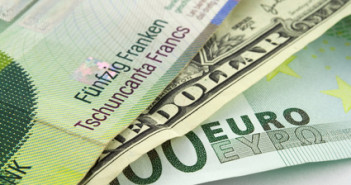EUR/USD has steadied on Tuesday, as the pair trades in the mid-1.37 range in the European session. The standoff in the Ukraine continues to rattle markets around the world. On Monday, US Manufacturing PMI improved in February and beat the estimate. Tuesday has little action on the release front, with just three releases on the schedule. Spanish Unemployment Change posted a small decline, surprising the markets which had anticipated a sharp gain.
Here is a quick update on the technical situation, indicators, and market sentiment that moves euro/dollar.
EUR/USD Technical
- EUR/USD edged higher in the Asian session, closing at 1.3755. The pair is unchanged in the European session.
Current range: 1.37 to 1.3773.
Further levels in both directions:Â Â 
- Below: 1.37, 1.3650, 1.3580, 1.3515, 1.3450 and 1.34
- Above: 1.3773, 1.3830, 1.3895, 13915 and 1.40 and 1.4214.
- 1.3773 is a weak resistance line. 1.3830 follows.
- The round number of 1.37 is providing support. 1.3650 is stronger.
EUR/USD Fundamentals
- 8:00 Spanish Unemployment Change. Exp. 74.2K. Actual -1.9K.
- 10:00 Eurozone PPI. Exp. 0.0%, actual -0.3%.
- 15:00 US IBP/TIPP Economic Optimism. Exp. 45.6 points.
*All times are GMT
For more events and lines, see the Euro to dollar forecast.
EUR/USD Sentiment
- Spanish Unemployment Change shocker: If there was an academy award for the most unpredictable economic release in the Eurozone, Spanish Unemployment Change would have to be considered one of the favorites to win. The indicator has fluctuated wildly in recent readings, posting huge moves and leaving markets estimates in tatters. In the February release, the indicator posted a small loss of -1.9 thousand, shocking the markets which had braced for a gain of 74.2 thousand. Spanish indicators have looked solid so far in 2014, and on Monday, Manufacturing PMI posted a respectable reading of 52.5 points, pointing to slight expansion.
- Ukraine drama continues: The large nation which has an area bigger than France’s and a population like Spain’s, is falling apart at the seams. Russia has taken over the Crimea peninsula and could proceed to other cities in the east of the Ukraine, where the population is pro-Russian. The new government in Kiev has called all reservists, but it doesn’t seem to be willing to fight. Also the West’s action fall short from action, and talk only about economic sanctions against Russia. If the crisis ends with the fall of the new regime in Kiev and a return to a pro-Russian Ukraine, fears about a default will subside. Yet if the tension continues and turns into a full scale war and/or a division of the Ukraine, the outstanding debt may never be repaid and Europe could suffer a blow. In the meantime, the big winner is the Swiss franc.
- Breathing room for the ECB: The big surprise out of Brussels seems to have shelved plans for a negative deposit rate. With core inflation at 1%, Draghi can fend off criticism. ECB Governing Council member Ignazio Visco said that a negative deposit rate is on the agenda in the upcoming March meeting (currently the rate is at 0%). While the ECB may not take action, this comment certainly weighed on the euro. It joins similar sentiments out of the ECB and some complaints about the euro’s strength from the head of the Eurogroup.
- First NFP hint: The ISM manufacturing PMI is the first hint towards the Non-Farm Payrolls. It is also important to note the employment component. At the moment, the assumption is that the Fed will continue its QE tapering moves also in March, even if the economy is somewhat struggling. Janet Yellen acknowledged the slowdown in the US economy but did not hint about any change in QE tapering. However, forward guidance could certainly be adjusted if the unemployment rate continues falling. The meeting minutes indicated that interest rates are unlikely to rise, even if unemployment drops to 6.5%.
- German numbers impress: German retail sales rose by 2.5%, calming fears seen in the previous months. The number of unemployed in the euro-zone’s locomotive also fell more than expected and this joins the strong German GfK Consumer Confidence that reached 8.5 points, its highest level since January 2007. and the upbeat similar sentiments out of the ECB high. Germany is certainly doing well, but others are lagging behind, notably Italy and France.
More:Â Euro-zone inflation: a look to February 2013 can explain the surprise



